Inside the Jet Stream
- By Rick Groleau
- Posted 01.30.01
- NOVA
Perhaps your image of this fast-flowing, high-altitude wind comes from maps broadcast during the weather portion of your local news. You know the kind—the ones that, if you live in the U.S., often show a long, fat arrow entering in from the northwest of the country, dipping down to the lower Midwest, angling up over the Northeast, and finally flowing out over the Atlantic Ocean. Well, in actuality, the jet stream is a complex phenomenon involving interplay among many variables. Catch its drift in this simplified introduction.
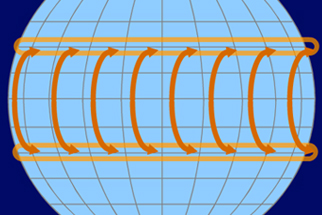 Launch Interactive
Launch Interactive
What exactly is this high, eastward-flowing wind we hear about on weather reports? Find out in this interactive.
Editor's note: See Further Reading below for a jet stream FAQ and glossary.
This feature originally appeared on the site for the NOVA program Vanished!.
Further Reading
Jet Stream FAQ
How define "jet stream"? The jet stream, one of the most dramatic forces of nature, was discovered during World War II when aviators first tried to cross the Pacific. This strong wind current is often defined as upper atmosphere winds that blow faster than 57 miles per hour.
How high? At an altitude above 20,000 feet, or between six and nine miles above the Earth's surface, the jet stream winds make their presence known. This puts the jet stream near the top of the Earth's troposphere, where most of the Earth's weather occurs.
How fast? The core of the jet, a fast-moving wind current that blows west to east around the Earth, can reach speeds upwards of 300 miles per hour in the winter. These winds are stronger during the winter months, because at this time of year the surface temperature contrasts are greater. The greater the contrasts in surface temperature, the stronger the jet stream winds blow.
Size? Although the jet stream may stretch for thousands of miles around the world, it is only a few hundred miles wide and often less than three miles thick.
Does it affect weather? This strong current of air pushes weather systems around the world and greatly affects local weather systems by propelling them forward.
Does it ever blow north or south? Because the jet stream winds are greatly affected by changes in temperature, their trajectory does not always flow in a uniform west-to-east direction. Often they might head due north and then arc down in a southerly direction, creating a wavy pattern, or what meteorologists call troughs and ridges.
Jet Stream Glossary
angular momentum—An object's momentum when that object follows a path around a fixed point, such as an axis. See also momentum below.
convection cell—Convection is the movement of heat within a gas or liquid by the circulation of currents. With natural convection—the type responsible for atmospheric movement—the circulation is the result of gravity. Convection cell describes the cyclical pattern of movement of a gas or liquid such as the atmosphere, the ocean, or the Earth's mantle.
jet stream—High-speed winds usually found at high altitudes, just below the tropopause, between 25,000 and 45,000 ft. The term jet stream was coined by the first pilots who encountered this strong wind, to whom it seemed as though the air was being blown out of a gigantic nozzle or jet.
low- and high-pressure systems—Depicted as either an "L" or an "H" on weather maps, these are weather systems in which air pressure is either low or high. Low-pressure systems are often associated with clouds and precipitation; high-pressure systems often bring clear skies.
momentum—The force or energy associated with an object in motion. Also known as linear momentum. If an object's linear momentum has no external force acting on it, then that object's momentum will not change.
polar front—The boundary between the colder air of the polar regions and the warmer air of the tropics. The wind generated at polar fronts helps to power polar-front jet streams.
tropopause—The zone in the atmosphere that divides the troposphere and the stratosphere. The altitude of the tropopause varies with latitude, being highest above the equator (about 12 miles) and lowest near the poles (less than five miles).
troposphere—The lowest layer of atmosphere
stratosphere—The layer of atmosphere that extends from the tropopause to the mesosphere. (The mesosphere is, on average, 30 miles high.)
Related Links
-
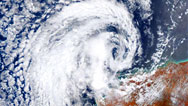
Quiz: Hurricanes
Five questions that will separate the hurricane know-it-alls from the rest of us
-
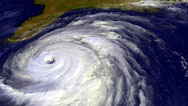
Hurricane Power
Your average hurricane releases enough energy to power the world 200 times over. Go figure.
-
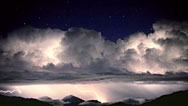
How Lightning Works
It's like a giant spark in the sky, though with a few puzzling differences.
-
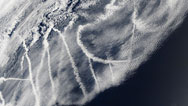
Understanding Global Dimming
What is "global dimming" and how can it counter global warming? See how this critical phenomenon was discovered.
You need the Flash Player plug-in to view this content.

